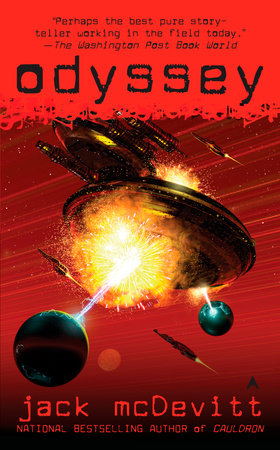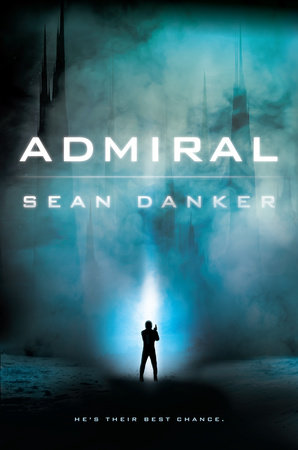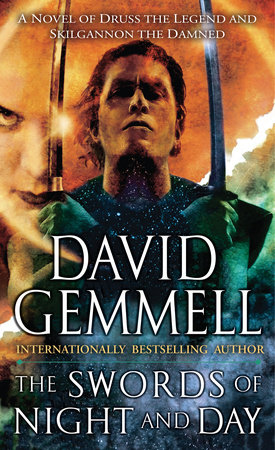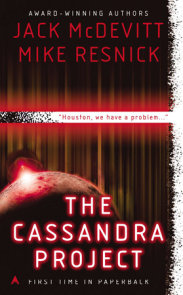Author Q&A
Essay by Jack McDevitt
A. E. Housman, in one especially memorable poem, describes watching soldiers march by on their way to war. One, in passing, turns in his direction. Their eyes meet, and Housman reacts:
What thoughts at heart have you and I
We cannot stop to tell;
But dead or living, drunk or dry,
Soldier, I wish you well.
Six Academy novels, and one short story, came out of those lines…
As detailed in The Engines of God, early in the 22nd century, researchers are shocked to discover a statue, a monument perhaps, on Iapetus, one of Saturn’s moons. The figure depicted is clearly not human. A mission is dispatched. It discovers footprints that suggest the statue is a self-representation. It’s female. And it’s 10,000 years old.
The footprints lead to an area which had provided the rock for the statue. And one set of tracks leads up onto a ridge from which one could see a rising Saturn, whose position in the sky, because of tidal lock, never changes. The prints suggest the creature, the Sculptor, spent some time atop the ridge. Then they return in the general direction of the statue, but vanish midway, as if the Sculptor had been lifted into the sky.
The mystery is decades old when the site is visited by a small team that includes Priscilla Hutchins, a young pilot. While the researchers dig and measure, Hutch—as she is known, because she hates the name ‘Priscilla’—studies the statue. Then she follows the prints onto the ridge. And she looks out at the planet in the sky. At the magnificent rings. At the multiplicity of moons.
Hutch stood unmoving.
The universe is a drafty, precarious haven for anything that thinks. There are damned few of us, and it is a wide world and long… What had brought her so far from home? Why had she traveled alone? Long since gone to dust, no doubt. Nevertheless, I wish you well.
And Hutch is off on a lifelong quest that will encompass the omegas, giant cosmic clouds that rain rock and lightning on anything not part of the natural world. She will investigate an enormous interstellar vehicle that is part ship and part museum. (Chindi) She will find herself trapped on a planet that is mere days away from a collision with a gas giant. (Deepsix) As chief of operations at the Academy, she will help save an entire alien civilization targeted by one of the omega clouds. (Omega) Still later, she will direct another desperate rescue, this time of researchers from a million-mile-long hypercollider, which has come under attack from, in reviewer Tom Easton’s words, a cosmic Environmental Protection Agency. (Odyssey)
Still, over the decades, the problem for the Academy is threefold: reluctant government funding, weak leadership in the director’s office, and a slow star drive. Hutch’s ships could manage about ten light-years a day, which, if you left at midnight, would get you easily to Alpha Centauri for lunch. That might seem pretty good, but if you were headed, say, for the center of the galaxy, a round trip would require roughly sixteen years. And for anyone seriously interested in the omega clouds, in finding out what was behind the apparently pointless mayhem, it would be necessary to get to that core, their place of origin.
Eventually the funding for such ventures goes away altogether, and the various organizations around the globe that provided deep space exploration fold their tents. The Academy, by mid-century, had become a retirement home. Many graduates are dead, many more old and infirm. Matt Darwin, one of the few remaining from the last class, is selling real estate, no longer dreaming of the stars.
Then the Locarno drive appears. The Prometheus Foundation struggles to raise money to test it, and, when the tests prove successful beyond anyone’s dream, the Foundation determines to launch a mission to the Cauldron, the galactic core. Two ships will be used. Matt Darwin will pilot one. And the other? Well, one of the Foundation’s fundraisers happens to be Priscilla Hutchins…
—Jack McDevitt



























